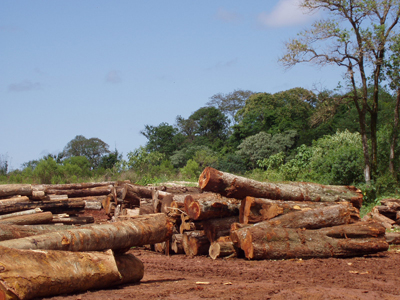REDD Alert
It’s time we brush up on REDD - or Reduced Emissions from Deforestation and Degradation – for all our sakes.
In 2012 the Kyoto Protocol to prevent anthropogenic climate change runs out. 2012 is a significant year for many other reasons too. For instance, if you’re an ultra pessimist you may think the end is nigh - if the Mayans and their calendars are correct. If you’re a new age optimist you might believe there will be a strong shift in social consciousness - perhaps saving ourselves from our own behaviour.
But for the sake of argument, let’s suppose the sky doesn’t fall on our heads and we have to keep on going.
Save the forests, save the climate?
REDD has emerged as a strong candidate for inclusion in the Kyoto successor. The tragedy of Kyoto was that it failed to include forests in its carbon accounting. There are many reasons for this but essentially the waters were too murky. There was too much unknown leakage and too many unknowns generally.
But, supporters of REDD think enough is enough. We can’t go on ignoring one of the biggest slices of the climate cake: according to the UN deforestation accounts for roughly 20 per cent of global greenhouse gas emissions. REDD will provide a financial mechanism that would provide incentives for efforts to reduce forest sector greenhouse gas emissions. Or in simple terms: rewarding people for not chopping down forests. These “people” could in theory be countries, industries or landowners.
It’s likely that the financing will boil down to three major techniques: a national, sub-national and nested approach.
The national approach is supported by people who believe fighting deforestation relies on wide-reaching policy changes that can realise large reductions.
The sub-national approach leans towards defined geographical areas or a project focussed method.
The nested approach marries the other two options and suggests integrating sub-national activities into a national accounting framework.
To include forests in global carbon accounting seems to make extreme sense, but as expected there are a number of hurdles to overcome. According to CIFOR the success of REDD will likely depend on tackling profound market and governance failures. REDD policies will have to align the incentives of economic actors and the public interest, a challenge made more difficult by the complex causes of deforestation, many of which are external to the forestry sector.
CIFOR go on: “Policies need to address diverse local situations while removing perverse subsidies that encourage forest conversion, ending unsustainable extraction, devolving rights and responsibilities to local forest users and promoting the benefits and ecosystem services that forests provide besides carbon storage and sequestration”.
The Holy Grail. Or how much will it all cost?
The 2008 Eliasch Review estimates that US$17 – 33 billion must be invested year on year to cut greenhouse gas emissions from deforestation by 2030. It has been suggested that the global carbon markets could supply around US$7 billion by 2020 leaving a funding shortfall of US$11-19 billion per year.
Virgilio Viana, director general of the Amazonas Sustainable Foundation elegantly analysed the various funding techniques while visiting IIED. He explains that using the national approach option the rich Annex I countries could pay for it and, for example, Norway’s Climate Change and Forestry mechanism has an initial budget of US$2.5 billion for the next five years. The nested approach option could combine a market driven approach with the national strategy.
Viana suggests a dual financing mechanism for REDD “may provide a simple solution to a much-debated issue on the road to Copenhagen. If rainforest governments are supported by governments of Annex I countries, REDD can become one of the most effective mechanisms to deliver rapid, large-scale reduction of greenhouse gas emissions”.
He goes on to warn: “Although REDD financing may become a catalyst of change towards tropical forest conversion and sustainable development, it should not be seen as a panacea. There are political, human rights and environmental issues that require a multitude of mechanisms. REDD can be one, but not a substitute for all”.
The REDD debate is likely to reach its crescendo in the run-up to Copenhagen in December 2009 and Plant Talk would love to hear your responses to this article and your ideas so we can report the breaking news around this critical issue.
